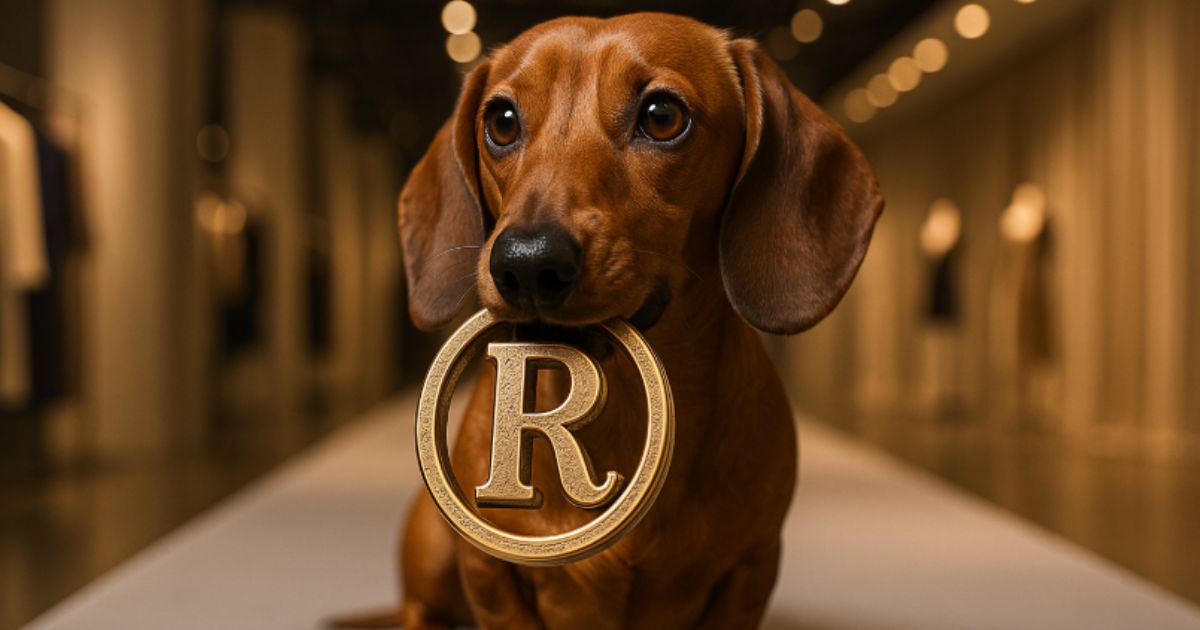Abstract
Many entrepreneurs and professionals often wonder whether it is really necessary to invest in a logo or whether a name alone is enough to distinguish a business.
The answer, today more than ever, is that a logo is not an ornament: it is an integral part of brand identity and, as the Italian Supreme Court recently recalled in order no. 14095/2025, it can even outweigh the name itself.
It all begins with a dog…
The legal dispute that helps answer this question began in 2017. Harmont & Blaine, famous for its stylized profile of a dachshund, realized that Thom Browne was using the image of his dog – also a dachshund – on some clothing items. Believing it to be an infringement, Harmont & Blaine applied to the Naples Court for interim measures, obtaining both a seizure order and an injunction against the American designer’s companies.

At that point, it was Thom Browne himself who sued the Italian fashion house before the Milan Court, seeking a declaration that the use of the dachshund did not constitute infringement or unfair competition, and accusing the other party of disparaging unfair competition for having sent partial and misleading cease-and-desist letters to Thom Browne’s retailers.
Harmont & Blaine, for its part, argued that Browne’s signs amounted to outright counterfeiting of its trademarks.
The Milan Court, with judgment no. 815/2022, upheld Harmont & Blaine’s claim, confirming infringement and ordering Thom Browne to pay around €197,000, calculated using the “fair royalty” criterion.
The Milan Court of Appeal, called upon by Thom Browne, also ruled that the dachshund was the dominant element of Harmont & Blaine’s mark and that the graphical differences between the two dogs were insufficient to eliminate the risk of consumer confusion.
What can be registered as a trademark?
To understand the logic of these decisions, one must look at the rules governing trademarks.
Trademark protection in Italy is governed by the Industrial Property Code (Legislative Decree 30/2005), which in art. 20 gives the registered trademark owner the right to prevent third parties from using identical or similar signs, where this may create a risk of consumer confusion.
The same principle applies at the EU level thanks to Regulation 2017/1001 on the European Union trademark, which provides uniform protection throughout the EU.
The law recognizes several types of trademarks, the most common being:
- Word marks, consisting of words or letters (e.g., NIKE®);
- Figurative marks, consisting only of an image or logo (e.g., Apple’s bitten apple®);
- Combined marks, where name and image coexist.
Combined marks are further divided into:
- Complex marks, consisting of a combination of elements, each with distinctive capacity;
- Composite marks, consisting of a combination of elements that, considered individually, have no distinctive capacity.
It is precisely in complex marks that the most delicate issue arises: which distinctive element dominates the other? Which can be considered the dominant element?
The law does not give a definitive answer. Judges must evaluate case by case, determining which element of the complex mark strikes and remains in the consumer’s memory.
Is the image more distinctive than the word?
The Harmont & Blaine vs. Thom Browne case reached the Italian Supreme Court, which in May 2025 issued the final word with order no. 14095/2025. The Court confirmed the lower courts’ decisions, highlighting a key point: in the Harmont & Blaine mark, the truly distinctive element is not the name, but the dachshund image.
According to the judges, that stylized dog, always shown in profile and with constant proportions, had over the years become the real heart of the brand – what makes it instantly recognizable to the public. It is not an ornamental detail, but the element that catches the eye and imprints the brand’s identity in memory. By contrast, the name has weaker evocative power, since the dachshund has gained autonomous strength through long and consistent exposure in the market.
For this reason, the Supreme Court held that even though Thom Browne operates in a different fashion segment and adopts non-overlapping commercial strategies, the use of a similar dachshund is still capable of causing confusion. The average consumer, seeing that profile, might believe the products come from the same company or from affiliated companies.
The principle is therefore clear: in complex marks composed of words and images, it is not at all certain that the name will prevail. The Court held that “the figurative element may, in particular due to its shape, size, color or position within the sign, occupy a position equivalent to that of the word element. Therefore, the judge must examine the intrinsic qualities of both the figurative and the word element of the applied-for trademark, as well as their respective positions, in order to identify the dominant component.”
Not just aesthetics: why a logo can save (or ruin) a brand
The dachshund case teaches that a logo is not a mere graphic ornament but can become the very core of corporate identity.
A strong brand is not built with words alone. An image has the ability to lodge itself in the consumer’s memory immediately, often more effectively than the name. This is why, even if a business chooses a different denomination, using a symbol that recalls a competitor’s still risks creating confusion.
The consequences are serious. Those who use a logo similar to another’s may be ordered not only to cease using it but also to pay damages, which can be quantified in various ways. In other words, imitating a logo is not just a theoretical risk: it can prove very costly, both financially and reputationally.
In a world where images and symbols speak faster than words, the logo may well be the true voice of the company. It is not a mere aesthetic detail, but a strategic investment: it must be chosen carefully in order to avoid infringement.
© Canella Camaiora S.t.A. S.r.l. - All rights reserved.
Publication date: 10 September 2025
Textual reproduction of the article is permitted, even for commercial purposes, within the limit of 15% of its entirety, provided that the source is clearly indicated. In the case of online reproduction, a link to the original article must be included. Unauthorised reproduction or paraphrasing without indication of source will be prosecuted.

Margherita Manca
Avvocato presso lo Studio Legale Canella Camaiora, iscritta all’Ordine degli Avvocati di Milano, si occupa di diritto industriale.
